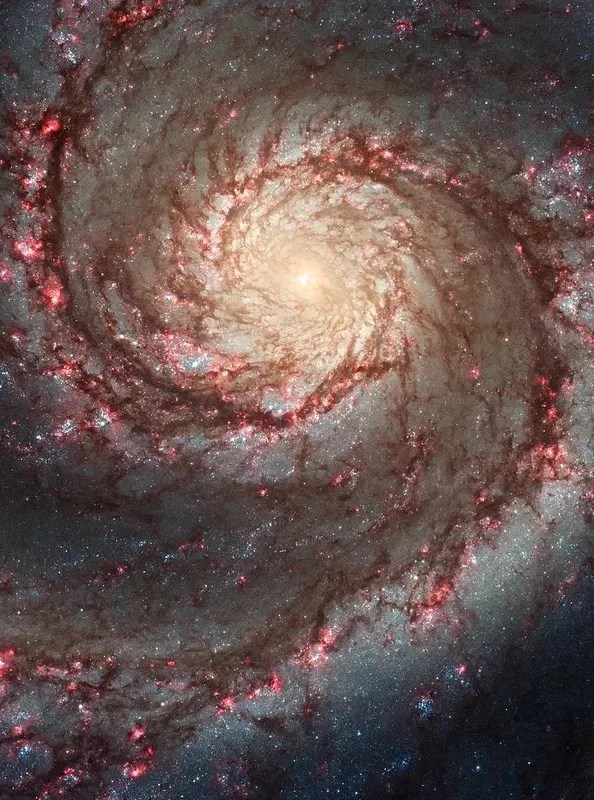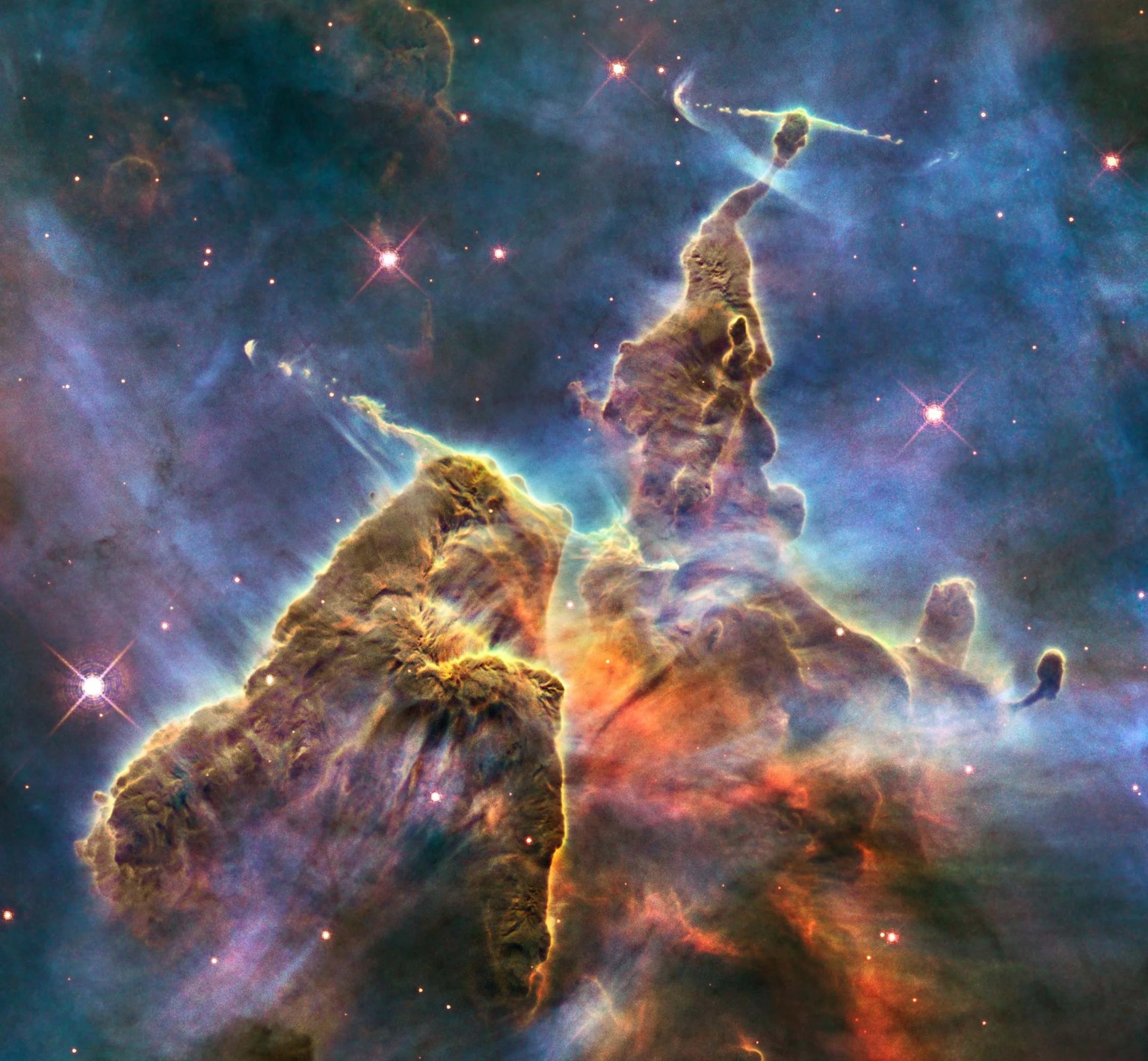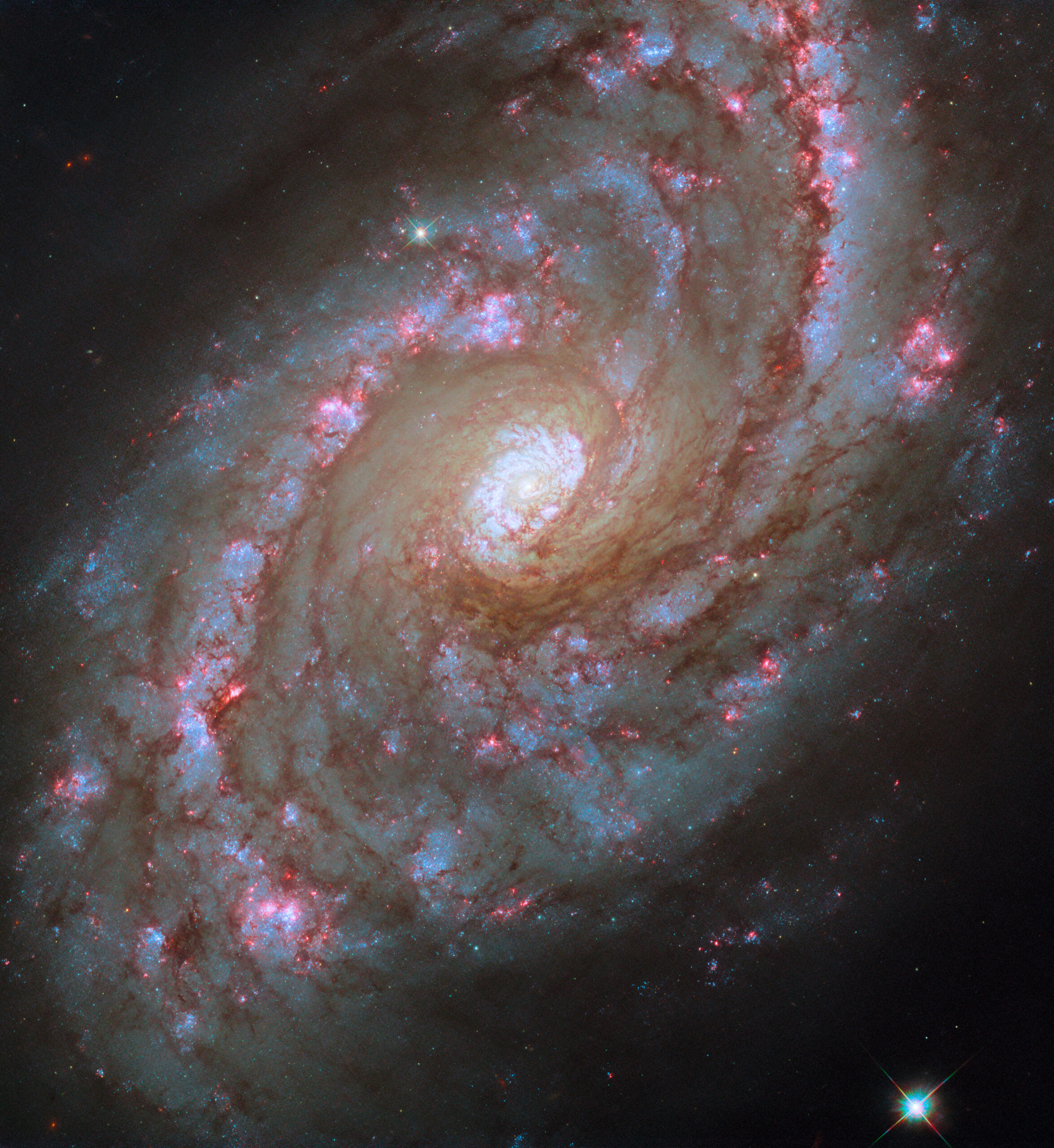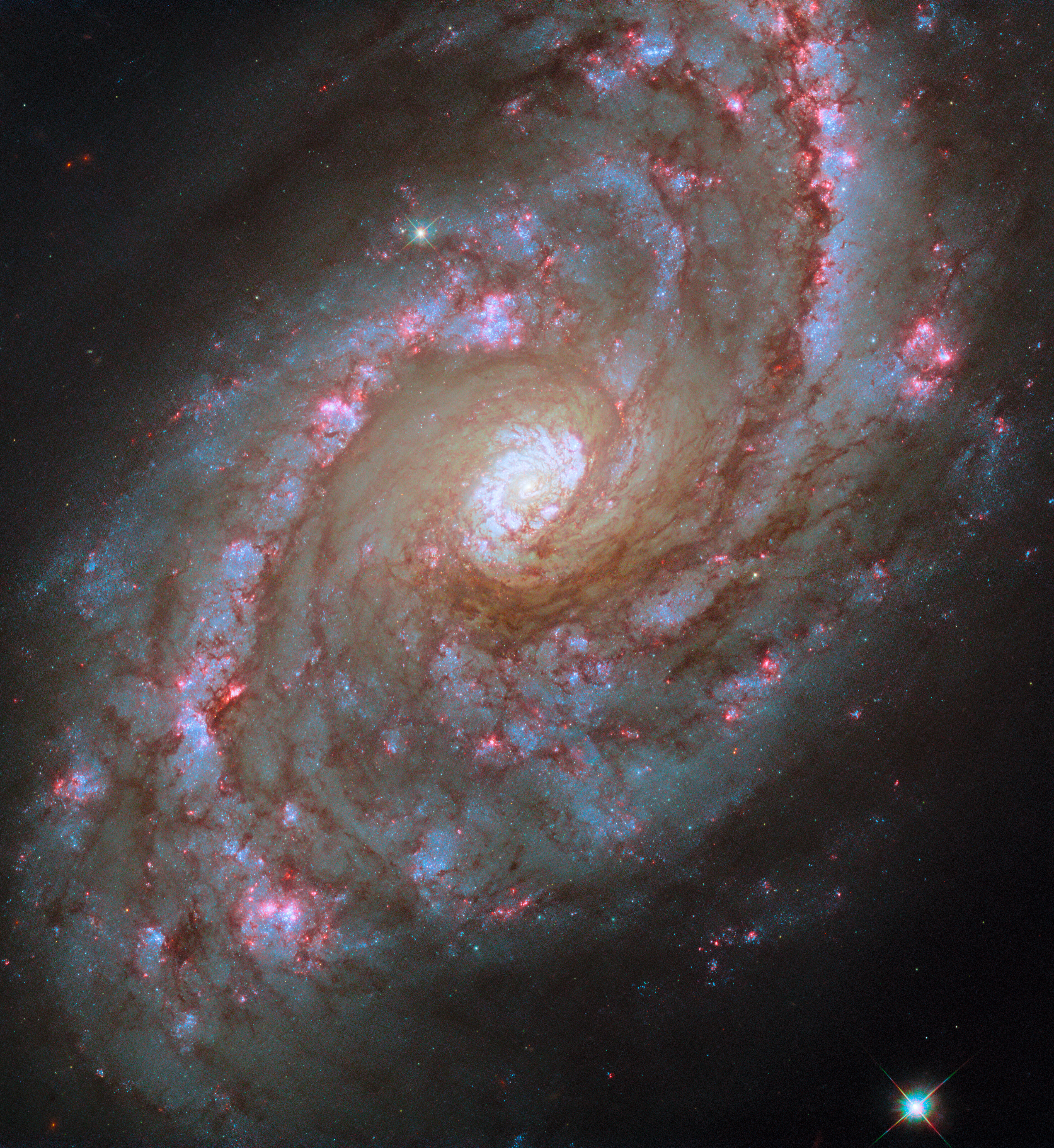Hubble Space Telescope Home Hubble Spots a Grand Spiral of… Hubble Space Telescope Hubble Home Overview About Hubble The History of Hubble Hubble Timeline Why Have a Telescope in Space? Hubble by the Numbers At the Museum FAQs Impact & Benefits Hubble’s Impact & Benefits Science Impacts Cultural Impact Technology Benefits Impact on Human Spaceflight Astro Community Impacts Science Hubble Science Science Themes Science Highlights Science Behind Discoveries Hubble’s Partners in Science Universe Uncovered Explore the Night Sky Observatory Hubble Observatory Hubble Design Mission Operations Missions to Hubble Hubble vs Webb Team Hubble Team Career Aspirations Hubble Astronauts News Hubble News Hubble News Archive Social Media Media Resources Multimedia Multimedia Images Videos Sonifications Podcasts E-books Lithographs Fact Sheets Glossary Posters Hubble on the NASA App More Online Activities 2 min read
Hubble Spots a Grand Spiral of Starbursts 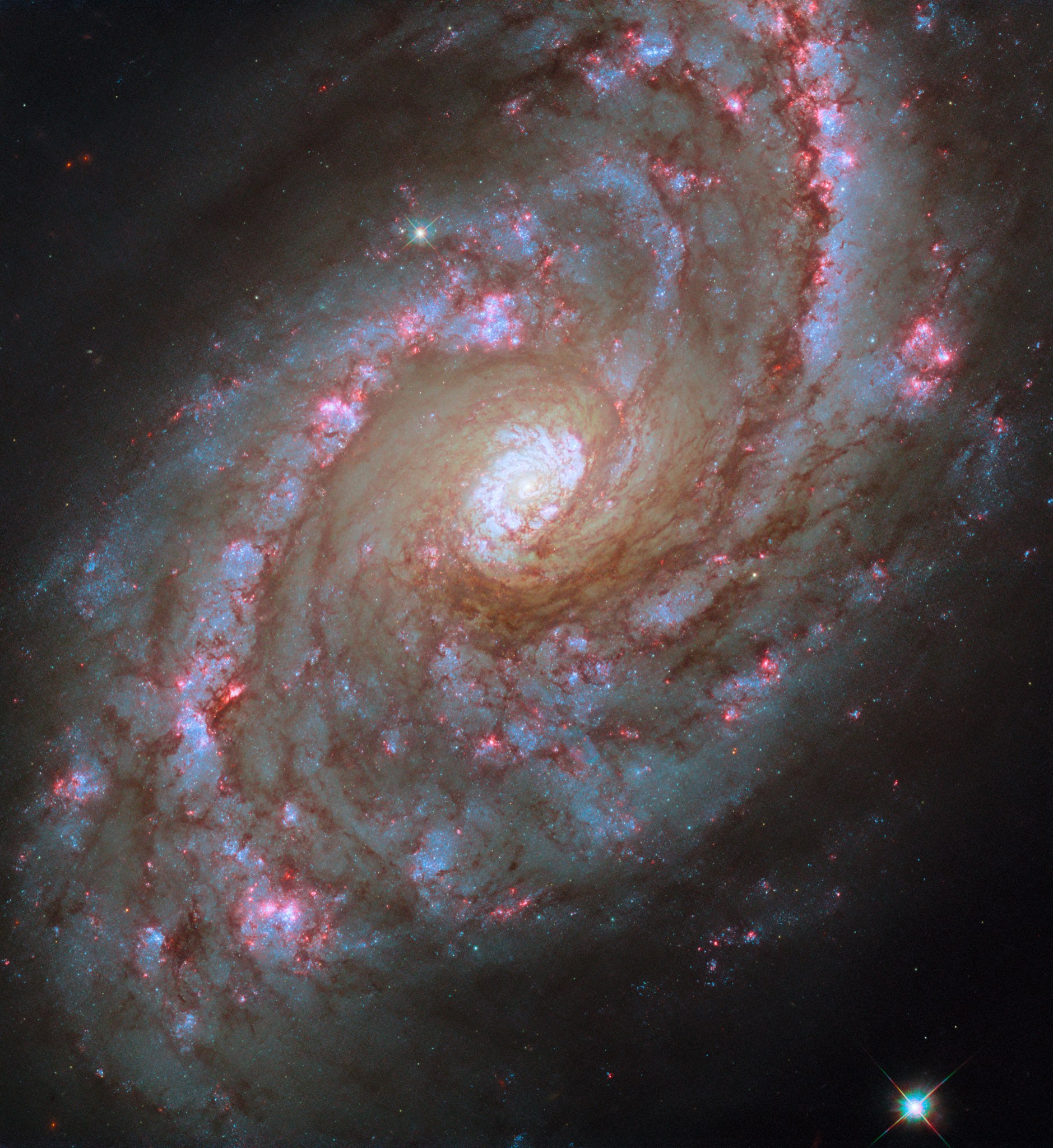 The glittering NASA/ESA Hubble Space Telescope image is of the spiral galaxy NGC 5248, also known as Caldwell 45. ESA/Hubble & NASA, F. Belfiore, J. Lee and the PHANGS-HST Team The sparkling scene depicted in this NASA/ESA Hubble Space Telescope image is of the spiral galaxy NGC 5248, located 42 million light-years from Earth in the constellation Boötes. It is also known as Caldwell 45. The Caldwell catalog holds visually interesting celestial objects that are not as commonly observed by amateur astronomers as the more famous Messier objects.
The glittering NASA/ESA Hubble Space Telescope image is of the spiral galaxy NGC 5248, also known as Caldwell 45. ESA/Hubble & NASA, F. Belfiore, J. Lee and the PHANGS-HST Team The sparkling scene depicted in this NASA/ESA Hubble Space Telescope image is of the spiral galaxy NGC 5248, located 42 million light-years from Earth in the constellation Boötes. It is also known as Caldwell 45. The Caldwell catalog holds visually interesting celestial objects that are not as commonly observed by amateur astronomers as the more famous Messier objects.
NGC 5248 is one of the so-called ‘grand design’ spirals, with prominent spiral arms that reach from near the core out through the disk. It also has a faint bar structure at its center, between the inner ends of the spiral arms, which is not quite so obvious in this visible-light portrait from Hubble. Features like these which break the rotational symmetry of a galaxy have a huge influence on how matter moves through it, and eventually its evolution through time. They feed gas from a galaxy’s outer reaches to inner star-forming regions, and even to a galaxy’s central black hole where it can kick-start an active galactic nucleus.
These flows of gas have shaped NGC 5248 in a big way; it has many bright ‘starburst regions’ of intense star formation spread across its disk, which a population of young stars dominates. The galaxy even has two very active, ring-shaped starburst regions around its nucleus, filled with young clusters of stars. These ‘nuclear rings’ are remarkable enough, but normally a nuclear ring tends to block gas from getting further into the core of a galaxy. NGC 5248 having a second ring inside the first is a marker of just how forceful its flows of matter and energy are! Because the galaxy is relatively nearby, its highly visible starburst regions make the galaxy a target for professional and amateur astronomers alike.
Facebook logo @NASAHubble @NASAHubble Instagram logo @NASAHubble Media Contact:
Claire Andreoli
NASA’s Goddard Space Flight Center, Greenbelt, MD
claire.andreoli@nasa.gov
Details Last Updated Oct 10, 2024 Editor Andrea Gianopoulos Location NASA Goddard Space Flight Center Related Terms Astrophysics Astrophysics Division Galaxies Goddard Space Flight Center Hubble Space Telescope Spiral Galaxies The Universe
Keep Exploring Discover More Topics From NASA Hubble Space Telescope
Since its 1990 launch, the Hubble Space Telescope has changed our fundamental understanding of the universe.


